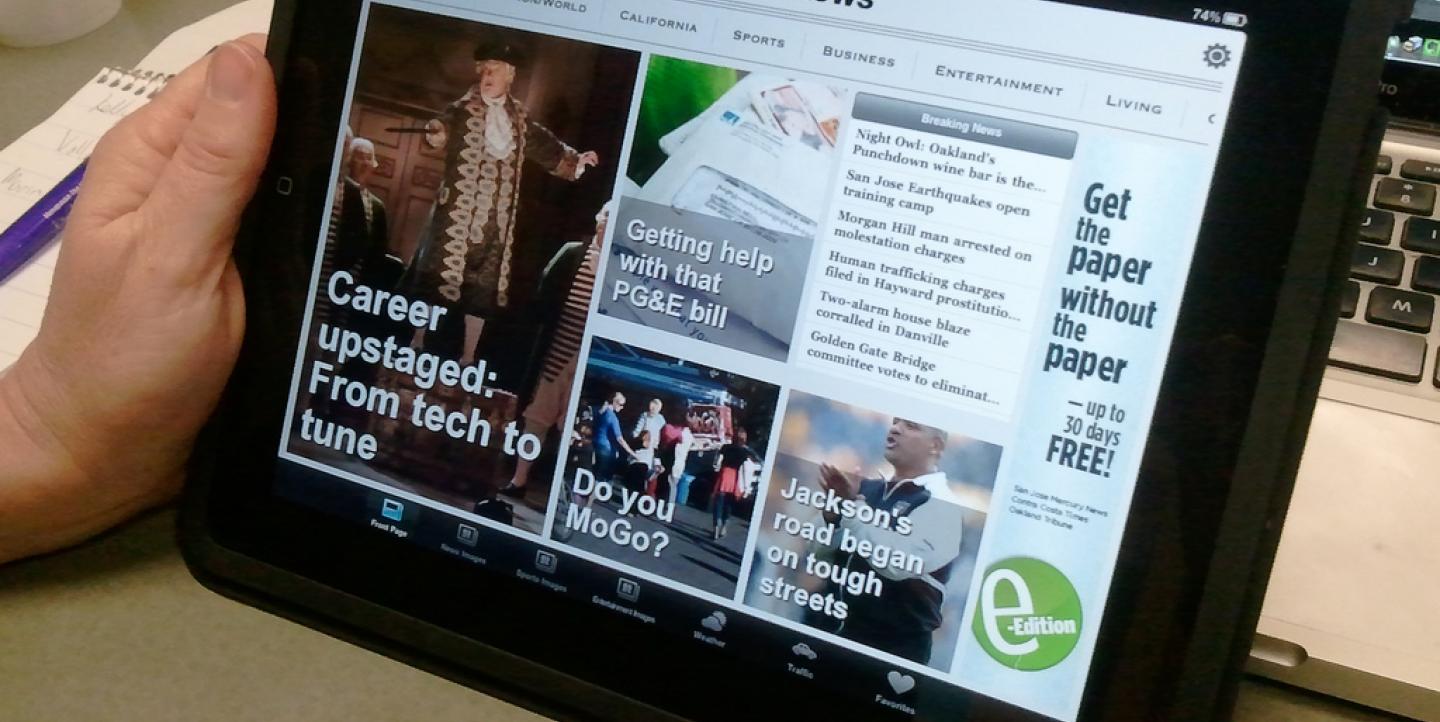Journalists and photographers need to rethink how they package - and how they get paid for - their work when it comes to tablet computers. Tablets, predicted to become the reading device of choice in the next few years, will change the demand and market for information.
Those are some of the takeaways from a Hacks and Hackers meetup held at Storify headquarters in San Francisco called "New rules of storytelling: The rise of tablets."
Talking about the burgeoning demand for touchscreen-friendly information were John Knight, a co-founder and editor of Once Magazine, an iPad photojournalism publication that readers have called "similar to American Life and National Geographic," and Jessi Rymill, a design and editorial consultant at Closed Mondays, whose recent tablet projects include Al Gore's "Our Choice" and Tim Ferriss's "A Christmas Countdown Experiment: The 4-Hour Chef Teaser."
Here are five more points worth touching on for journalists and photographers when it comes to tablet publishing.
-
There's no money in publishing for tablet computers - yet. Once Magazine, launched in September, has a revenue sharing model that will hopefully pay journalists and photographers decent rates for their work. Readers currently pay $2.99 for each edition. When answering a question from the audience about whether tablet publishing provides a decent paycheck, Once's Knight said, "NO! Just kidding. Sometimes. Well, it could...If we have 20,000 subscribers, it would be decent paycheck. I mean, if we could pay $2,500 for the photos and $1 a word, that would be decent. First, you have to establish yourself. The onus right now is on contributors to market...There's not a market for us right now any more than there is for contributors."
-
Your news organization is interested in them. Back in January, Forrester research predicted that U.S. consumers would buy more tablets than computers by 2015. In addition to launching hundreds of dedicated apps, news organizations have heeded the call to create content consumable on tablet computers with initiatives ranging from Rupert Murdoch's iPad-only publication The Daily to a Philadelphia media group subsidizing tablets for readers. The result? The Economist recently reached 100,000 subscribers for its iPad version.
-
Tablet publishing is not necessarily about interactivity or extreme stories. Once's format doesn't allow readers to pinch and zoom on photos, for example. "That's how it was shot and this is how you look at it," Knight said. He added that the photos are carefully chosen and crafted, and that the reader isn't the professional, plus it's more work for the publisher. One of Once's more popular stories, Knight said, isn't "war photography, but a story about a retirement community in Arizona." The photos chronicle the daily activities of the over-55 members from gymnastics to crocheting.
-
Tablet publishing may reverse the traditional text-to-photo ratio. Once magazine publishes three stories per edition, each story contains 15-20 photos accompanied by 800 words of text, the opposite of your usual word-heavy glossy magazine where a two or three pics accompany 10,000 words of copy.
- Get ready for the "bookification" of content. Rymill's latest project is the "A Christmas Countdown Experiment: The 4-Hour Chef Teaser" specifically made for the Kindle Fire. The free app, designed for first-time tablet users, gives a "taste" of the forthcoming Tim Ferriss book of the same title. Launched right after Thanksgiving, it's a combo cookbook, diet and exercise regime that promises to get readers into fighting shape before the expansive Christmas holidays.

